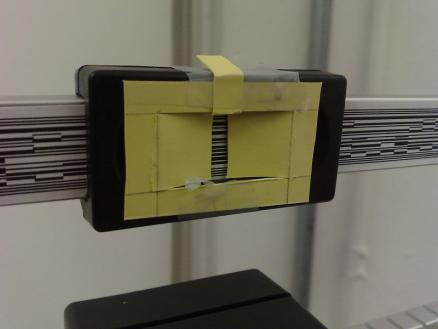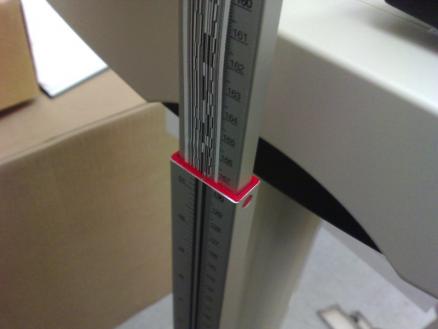ScaleBand Version Zero
 Fine Weight Adjustment with ScaleBand
Fine Weight Adjustment with ScaleBand
For my next trick, I'm modifying a SECA 800 medical scale with a SECA 220 height bar attachment. The measuring surfaces of the scale and bar will be covered or pegged to a scannable strip that represents the specific axis of measurement. I am going to encode the data of the fine and gross weight adjustments, as well as the height bar, so that the measurements coming off of the bar are unique. That way, the receiving system will not confuse a measurement taken from the fine weight measure with a gross weight or height measure.
I'd also like these codes to possibly be independent of the scale on which they are placed. I envision attaching a generic bar strip to the scale arms and height bar with increasing encoded numbers with indicator bits or bytes that specify the axis. When the system is installed on a new scale, the installer can calibrate the ends of the scale with the visible codes, allowing the receiving system to interpret the actual data based on a simple mathematical algorithm, like modulo of a prime number, where the prime is the indicator axis.
For example, I could encode the fine division as multiples of 7. A scanner that received a code would do a modulo check with 7. If the number mod 7 is 0, then the measure is recognized by the receiving system as a fine weight measurment. The number could then by divided by 7, and each increment there could be checked against the minimum and maximum calibrated values on the scale.
- Mike's blog



- 5547 reads
tags
Copyright Mike Edwards 2006-2009. All content available under the Creative Commons Attribution ShareAlike license, unless otherwise noted.


